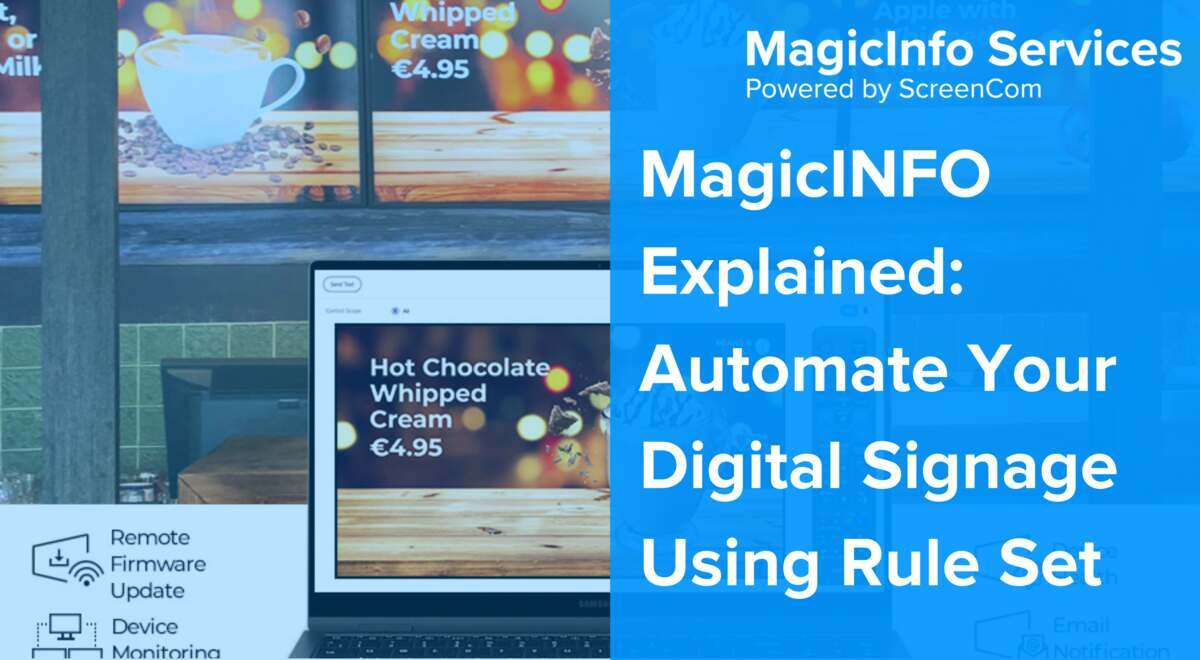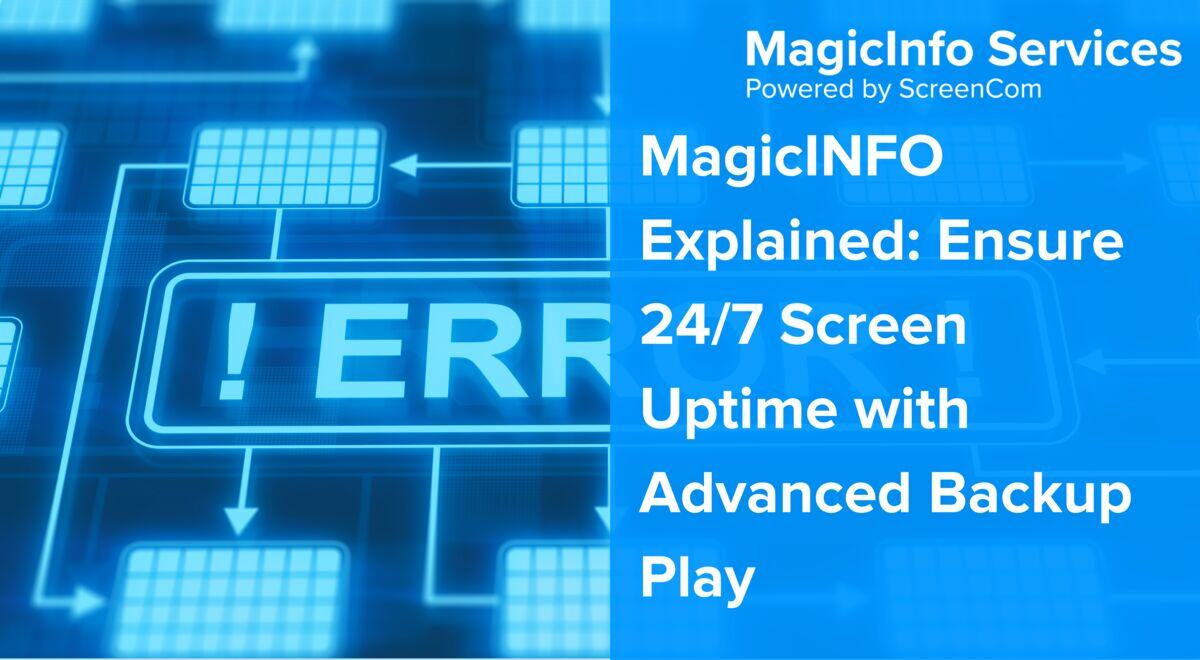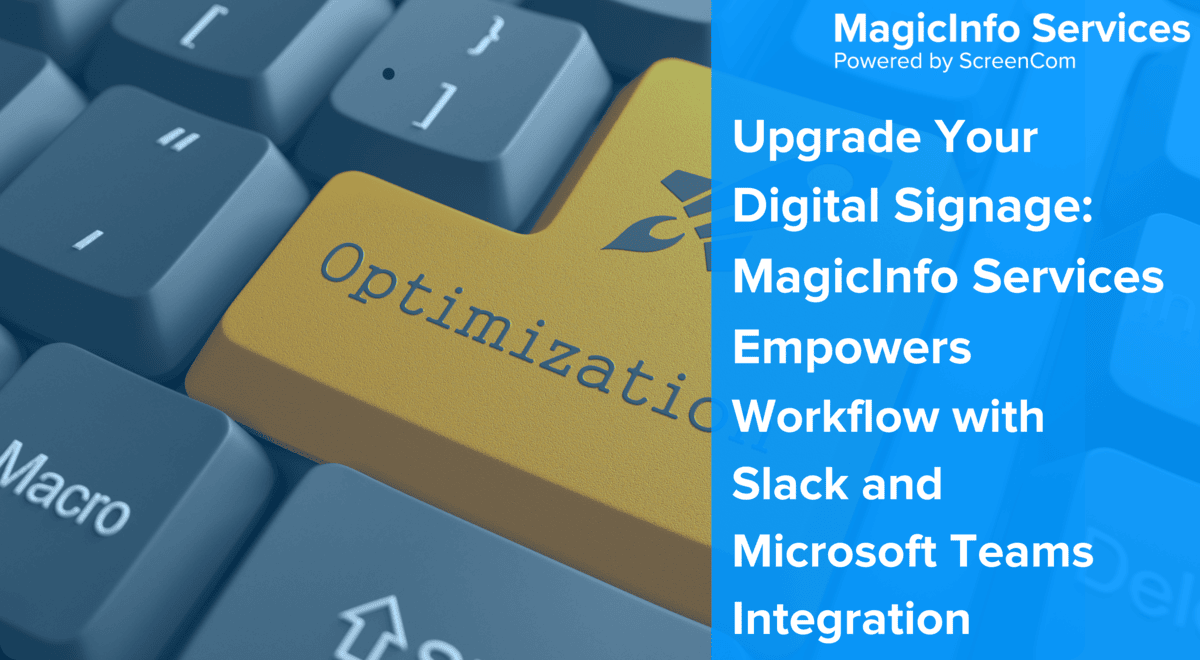Sustainability of digital signage - Expert Guide
Digital signage and sustainability - Key highlights
Businesses are growing more aware of their impact on the environment, and many have created "green" policies to appeal to shareholders, customers, and employees. Without question, it is much easier to implement such strategies for large corporations.
However, SMEs can also find creative ways to reduce their CO2 emissions and be more eco-friendly. In this piece, we will focus on the sustainability of digital signage and how organizations can leverage it to battle the climate change emergency.
Is digital signage eco-friendly?
Before we go to the nitty gritty stuff, it is important to tell you about the benefits of digital signage for the environment. Companies that use digital signage solutions for their businesses can reduce their carbon footprint. In particular, businesses can:
Save trees
The main advantage of digital signage is that businesses do not need to print their marketing materials. This means that they reduce their paper consumption dramatically because everything is displayed on the screens. For roughly every 8,000 pieces of paper, you save one tree!
Save water
Paper production is a water-intensive process. Twenty liters of water are used for every A4 pulp of paper, which makes you think twice the next time you go to the printer. Thanks to digital signage, companies can dramatically reduce their printing needs and as a result save precious resources in this day and age, when even first-world countries experience water shortages.
Save electricity
With digital signage, not only will you help save the environment, but also reduce electricity costs. This is because the displays are designed to consume less energy than commercial TVs and also have eco-friendly features like automatic turn-on/off options. Over time, companies that use digital signage notice a significant reduction in electricity and labor costs, compared to those that use paper signs.
Reasons to choose eco-friendly digital signage
There are multiple reasons for businesses to choose digital signage solutions. Let’s start from the inside out. First, let’s talk about the employees. Studies show that younger people want to have meaningful work. One big part of that is being a part of a company that cares about the environment.
Moreover, employees are more likely to stay at a job if they feel happy. One way to drive higher employee engagement is with digital signage around the office space. This can be used to present content from team-building activities, parties, or company values.
A happier team means a more productive team. So once you take care of the people that work for you, it is time to think about the customers. Businesses use digital signage to create unique experiences for clients by using striking visual content at locations.
By using digital signage for your advertising campaigns, you show potential customers that your business also cares about the environment because it is choosing a more sustainable option.
Last but not least, it is important to take care of the shareholders in your company. This can be done by showing them the sustainability of digital signage and how it positively affects the business in terms of employee and customer satisfaction as well as an increase in revenue.
Eco-friendly digital signage vs traditional signage
The way information is communicated to audiences has improved with the introduction of digital signage solutions. Changes to long-standing practices are always met with resistance. Although digital signage has been available for some time, many businesses continue to use outdated techniques like flyers, booklets, or billboards.
Here, we will compare traditional and digital signage, so that you can see how much more efficient technology can be. Eco-friendly digital signage vs traditional signage is a very important question for many businesses. Thus, we have prepared the below table to illustrate the differences between the two.
|
Digital Signage |
Traditional Signage |
|
|
♻️Sustainability |
Sustainable alternative |
Resource intensive |
|
💡Power reliance |
Relies on power to run content |
Does not rely on power to present content |
|
💲Costs |
Lower maintenance costs |
Higher maintenance costs |
|
🧑Customer experience |
Offers eye-catching features |
Static print material |
|
🏢Workplace perks |
Higher employee engagement rate |
Cheaper to implement at SMEs |
As you can see, both have their own advantages and disadvantages. In our experience, digital signage outperforms print every step of the way. Furthermore, it is becoming increasingly affordable in recent years, which makes it a viable option for SMEs and family-owned businesses. Here are the main advantages and disadvantages of traditional and digital signage:
|
Advantages |
Disadvantages |
|
|
Digital Signage |
|
|
|
Traditional Signage |
|
|
In an organization, digital signage can take the role of most or perhaps all printed messages. With the help of digital signage, businesses can drastically reduce CO2 emissions, and here’re some paper industry facts to put things in perspective:
- 200,000 sheets of paper equal one ton, which needs the growth of 17 trees and the use of nearly 100,000 liters of water.
- Each ton of the process produces 264 kilos of air pollution.
- 4% of the total energy used globally is used by the paper industry.
- Each year, American firms use 21 million tons of paper (about 80 kilos per employee, so one ton for every 11.4 employees).
- Paper still makes up 25% of all landfill in the US, despite expanded recycling efforts. Methane and other gases are released into the air, water, and soil as a result of the degradation of both the paper itself and the ink printed on it.
- There is still a lot of paper and a lot of trees being cut down, despite the paper industry's efforts to curb destructive practices like clear-cutting (which, among other things, speeds up the loss of topsoil).
- By the end of the day, 45 percent of printed documents in offices are discarded (and around 30 percent of printed documents are never even picked up at the printer).
- American businesses spend more than $120 million annually on paper (not including ink or disposal costs).
Let’s imagine that a company has a digital signage network with 100 displays with built-in players. The average digital signage display uses around 230 watts of power and the average price per kWh in Europe is 0.25 cents. If all 100 devices work 16 hours a day, throughout the entire year then the digital signage energy cost for the entire network will be:
- €9.20 per day
- €279.90 per month
- €3,358.40 per year
Keep in mind that this is just an example. Your digital signage network may be using displays with external players that consume extra energy which would affect the electricity bills. Or maybe you have a different number of signage screens? Your digital signage displays might be turned on for fewer hours. All of these factors ultimately affect your energy consumption and bills.
Moreover, these calculations exclude maintenance and content creation costs. So, you would need to take into account how many people you need to schedule and produce the visuals. It is also important to have a dedicated system admin to monitor the entire digital signage network.
Tips for eco-friendly digital signage strategy
Software for interactive digital signage has a variety of effects on many businesses that weren't foreseen just a few years ago. Since its technological inception as static advertising displays, digital signage has consistently advanced, from offering cutting-edge solutions for wayfinding software to promoting brands.
But one advantage of digital signage that frequently goes unnoticed is how environmentally friendly these visual technologies are. Many businesses have started to consider workplace sustainability in recent years.
A company's carbon footprint can quickly increase when paper use and electricity use are combined. Sustainable digital signage solutions aren't the only way to solve these problems, but incorporating them into your company's operations can at least make the workplace greener.
Incorporate more environmentally friendly digital signage designs into your company using one of these four methods if going green is becoming more of a focus in your office.
- LED vs LCDs
- Automated power-off
- Brightness adjustment sensors
- Routine maintenance and support
Also, you can implement the top 4 energy-saving tips into your strategy for sustainable digital signage. Businesses can take advantage of the timer settings and holiday management features, use a sensor, and think multi-purpose.
When talking about the sustainability of digital signage, we must mention the reasons why companies choose built-in digital signage players. For starters, less hardware means less waste and fewer maintenance costs. And another benefit of built-in players is that the display is more energy efficient than the combo of signage screen and external player.
LED vs LCDs
LED (Light-Emitting Diode) and LCD (Liquid Crystal Display) screens are two of the digital screen types that are used most frequently in the industry. While both have advantages and disadvantages in terms of performance, LED screens are the undisputed sustainability champions.
LED lighting has been proven to be up to 80% more efficient than conventional lighting solutions in tests and includes no toxic materials. Additionally, just 5% of the energy used by LED displays is lost as heat, converting 95% of it into light. Compared to LCD screens, LED screens are shown to have a significantly longer lifespan and use less overall electricity.
Automated power-off
Many businesses make the mistake of leaving their digital signage displays on throughout the day, even while their office is closed. Most digital signage solutions offer automated power on/off features that allow you to set the exact times when the screen is showing content. This helps companies reduce energy consumption and substantially lower electricity bills.
Brightness adjustment sensors
Running your digital signage display at maximum brightness will not only shorten its lifespan but also cause your energy usage to soar. Brightness adjustment sensors (which automatically change and regulate the brightness of your digital signage display without affecting its readability) are excellent digital signage features to save energy consumption.
Routine maintenance and support
Regular maintenance inspections for your digital signage displays will improve their performance and lifespan while identifying any instances of energy inefficiency. Your digital signage network will operate effectively and efficiently if you have a maintenance team by your side.
With the help of the Samsung Remote Management tool, businesses can control the entire digital signage network from one central location. As a result, companies can save a fortune on maintenance costs because the need to send someone on location is eliminated. This way organizations can allocate time and money to other projects.
Conclusion
We did our best to provide you with a good overview of the environmental impacts of both traditional and digital signage solutions. In a nutshell, it is important to remember that digital signage saves trees, water, and electricity in the long run.
Besides, there are quite a few reasons to choose digital signage over traditional for your business. For starters, it helps you boost productivity and employee engagement, which could result in better customer satisfaction and revenue increase. In addition, digital signage displays can contribute to creating a unique customer experience to drive sales.
When it comes to the pros and cons of digital signage, it most certainly outperforms traditional signs. It offers much more advantages compared to print marketing materials and has fewer disadvantages. For example, your business can control the entire network from one central location which reduces costs dramatically.
Creating a sustainable digital signage strategy is no easy task, but it starts with a few simple steps. Companies can take advantage of several different ways to reduce the carbon footprint of their signage network. It is much better to use LEDs, to use the automated power-off features, and to do routine maintenance.
Hopefully, our piece has helped you learn more about the sustainability of digital signage and helped you create a plan to implement our tips in your business. If you are in the market for a sustainable digital signage solution, schedule a call with one of experts who will be more than happy to walk you through the process and help you every step of the way.
Contributors:
Latest Digital Signage News
Interested in learning more about the digital signage industry? Check out some of our latest articles:

MagicINFO Explained: Automate Your Digital Signage Using Rule Set

MagicINFO Explained: Ensure 24/7 Screen Uptime with Advanced Backup Play




